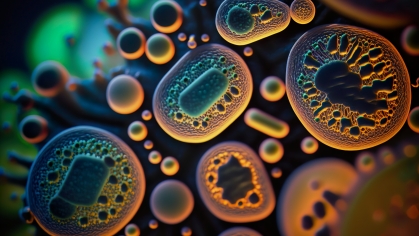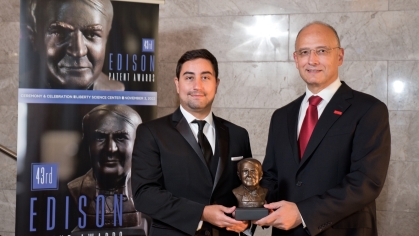How SoE Faculty Engineered Summer Break
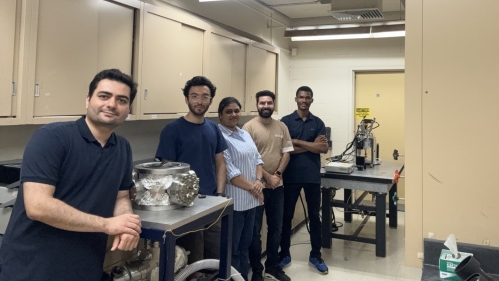
For many School of Engineering faculty and students the scheduled summer break is less a time to kick back and relax than a welcome opportunity to delve deeply into research projects covering everything from the development of a gait-monitoring shoe to the reliability and control of electric distribution systems and more.
Simiao Niu: Delivering Promising Results on Four Projects
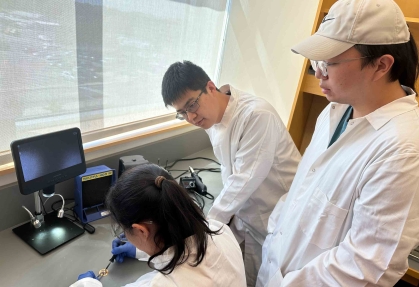
This summer, Simiao Niu, an assistant professor in the Department of Biomedical Engineering (BME), has graduate and undergraduate students and high school interns working in his lab on four different research projects
The first project, which has already produced promising results, “uses machine learning to optimize a nanogenerator’s output in biomechanical energy harvesting – using human motion to generate electricity to power wearables,” he reports.
He is performing a final test on his second project, which has developed a gait monitoring shoe powered by walking energy that collects information on number of walking steps, gait steadiness, and fall detection.
Niu says his third and fourth projects continue research on “a wearable sensor patch to treat psoriasis and preparation for a clinical test, and a smart bandage able to treat “chronic wounds,” respectively.
At the same time, Niu looks forward to the fall semester, when another doctoral student and four to five undergraduates will be joining his lab. “I’ll also teach my first undergraduate course about wearable technologies this fall – and would like to pass my passion, my knowledge in academia and industry and even in life experience to all my students,” he says.
Ryan Sills: A Focus on Funded Projects
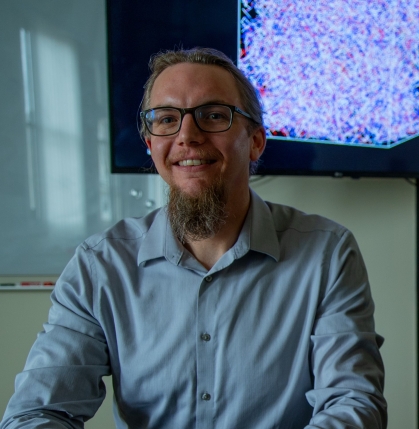
Ryan Sills, an assistant professor in the Department of Materials Science and Engineering, says he’s “focusing on the summer right now,” by continuing work on projects funded by the National Science Foundation (NSF), US Department of Energy (DOE), the US Army, the Naval Nuclear Lab, and Rutgers TechAdvance.
His team of 14 – 6 PhD students, 4 undergraduates, two undergraduate interns, one high school intern, and a postdoctoral student – is working with Sills on projects that he describes as “mostly focused on the deformation and damage of materials,” he explains. “This summer, I have students studying metals, clay, emulsions and colloidal fluids. I also have a team developing machine learning tools for modeling.”
“My group has made great progress on all fronts so far, including discovering a new type of material interface and developing a new type of neural network for material modeling,” he reports.

Demetracopoulou: Research That’s Going Places
Department of Civil and Environmental Engineering assistant professor Vasiliki Demetracopoulou is making progress on two ongoing, related research projects.
According to her, the first is exploring the integration of equity and justice into transportation asset management (TAM), to both identify challenges and provide guidance for transportation agencies updating current TAM systems.
Her second project, she explains, “is funded by NJ Transit and aims to support their capital planning and prioritization process.”
She is assisted by “a PhD student who is conducting literature review and reviewing equity-related practices in transportation, and an undergraduate who is performing qualitative analysis of expert interview data.”
Robert Mieth: Empowering Results
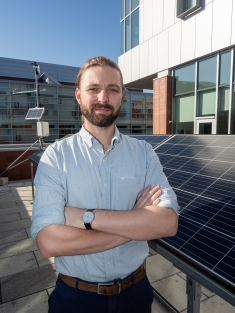
Together with two PhD students Robert Mieth, an industrial and systems engineering assistant professor, reports that his summer research is related to the reliability and control of electric distribution systems.
His project developing software to simulate the various resources used to model and control increased grid edge activity from consumers of alternative electric power sources – such as solar power has shown early promise.
In a second, related project he is building a computational method that defines optimal grid performance in terms of cost and reliability, so that different resources can work together to reduce the chance of blackouts. “Our results show that there is a pathway for system operators to include blackout risk in their decision making while minimizing a cost increase that might affect consumer electric bills,” Mieth says.
Yalin Li: Finding Value in Waste
Assistant civil and environmental engineering professor Yalin Li has a doctoral student and several undergraduates working with her this summer on two projects related to waste vaolorization.
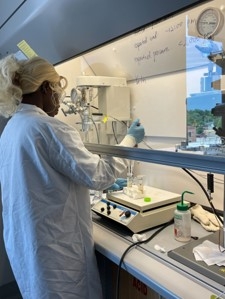
In one, dining hall food waste is transformed into biocrude materials that can be turned into transportation fuel and fertilizers, while a second project models the amount of value that can be generated and how great a number of emissions can be avoided by turning New Jersey waste into valuable products.
“We’re seeing encouraging results on both,” Li reports. “There are a lot of products we can make from New Jersey’s food and agricultural residuals using different technologies.”
Hang Liu: Achieving Impressive Results
Hang Liu, an assistant professor in the Department of Electrical and Computer Engineering, is spending time this summer working on some National Science Foundation (NSF) and Lawrence Livermore National Laboratory (LLNL) funded projects.
Liu says these include “a project about recommending papers to researchers with the help of large language models (LLMs0) and performing random walk calculations on dynamically changing graphs,” that have achieved very impressive early results.
Students, he says, “are discussing, designing, and coding the systems with me.”
He is also preparing for the fall semester by working on teaching, research, and service-related work.
Amin Reihani: Bringing Students into the Lab
As an assistant professor in the Department of Mechanical and Aerospace Engineering, Amin Rehani has been engaging doctoral students in the work on three innovative projects this summer funded by the Office of Naval Research, Airforce Office of Scientific Research, and Rutgers TechAdvance.
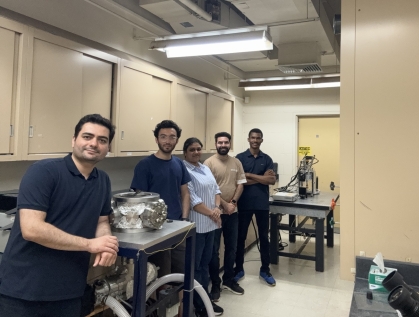
Experimental data for one project shows a more than 100-fold increase in temperature sensitivity with its novel thermometer or tunneling-diffusion edge sensor (TDES) when compared with current state-of-the-art sensors.
His team is also microfabricating devices to create two-dimensional nanoscale maps that he states will ultimately help in the design of “better device structures to improve thermal management and enhance power and frequency performance of transistors for communications and computing applications.”
In a third project, which is also returning positive early results, Reihani is developing a low-cost thin film sensor able to diagnose states of health and safety of lithium-ion batteries in real time.
